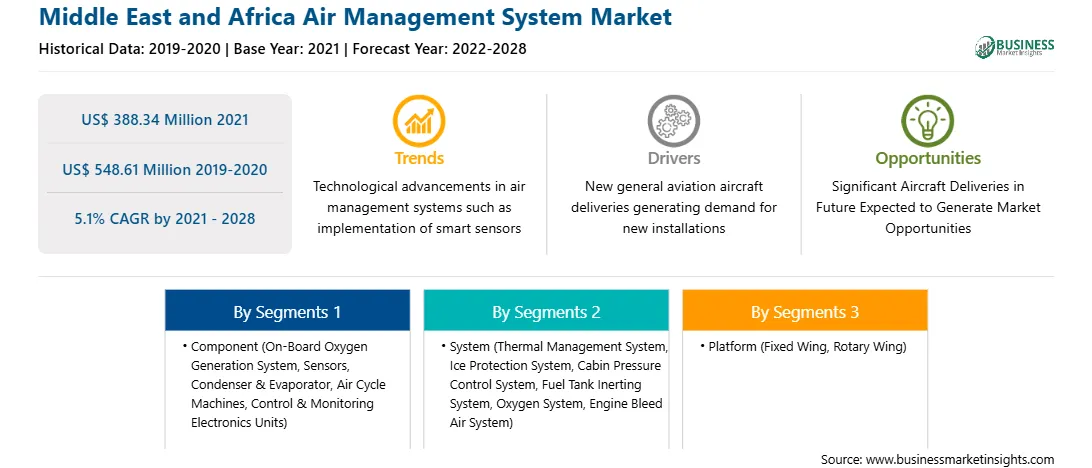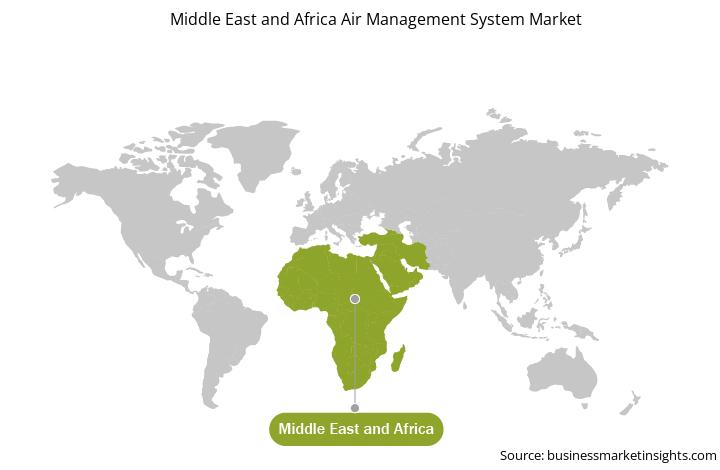Innovations in aerospace technologies witness constant growth worldwide. Air management systems involve many components such as oxygen systems, multiple sensors, evaporators & condensers, air cycle machines, electronic units for control & monitoring, and other components. The adoption of smart sensors for different air management operations, such as across HVAC systems, to provide more enhanced, optimized, and premium services to the passengers and crew members is one of the market's key trends. Moreover, the adoption of smart sensors in air management systems is soaring due to the rising electrification of aircraft components, including aircraft on-board environment control systems and monitoring systems. In addition, the digitization of thermal management techniques for heat transfer applications is another major trend of the air management system market.
Furthermore, the introduction of all-electric and more electric aircraft is another trend demanding more installations for air management system components. It is expected to aid the market growth during the near future. Some of the airliners have already ordered electric aircraft to retain their flight services for different operations such as air cargo and passenger transport. With the rising demand for charted aviation and the increase in the uptake of electric aircraft for zero-emission tourism experiences, the MEA electric aircraft fleet is rising at a healthy pace.
The MEA air management system market is majorly affected by the disruption in the supply chain. Pertaining to the closure of borders of countries, the supply chain of several components and systems have been disturbed. The demand for advanced aircraft technologies has also declined across the region as it is one of the largest importers of aircraft components and does not have any aircraft or component manufacturer across its countries. This has resulted in a loss of business among the air management system market players offering their products to respective customers in the MEA region.
South Africa has recently discovered patients of a new variant of COVID virus, i.e., Omicron, which has been one of the major concerns across the world right now. This has led to the closure of international borders for African flights across different countries of different regions worldwide. The widespread COVID-19 virus has led the manufacturers to suspend their operations or operate with a minimal workforce temporarily. This has weakened the demand for aircraft components, thereby hindering the requirement for air management systems in the region. Additionally, the disruption in the supply chain business, owing to the trade ban, has also reflected adverse effects on the air management system market across the region.
With the new features and technologies, vendors can attract new customers and expand their footprints in emerging markets. This factor is likely to drive the MEA air management system market. The MEA air management system market is expected to grow at a good CAGR during the forecast period.
Strategic insights for the Middle East and Africa Air Management System provides data-driven analysis of the industry landscape, including current trends, key players, and regional nuances. These insights offer actionable recommendations, enabling readers to differentiate themselves from competitors by identifying untapped segments or developing unique value propositions. Leveraging data analytics, these insights help industry players anticipate the market shifts, whether investors, manufacturers, or other stakeholders. A future-oriented perspective is essential, helping stakeholders anticipate market shifts and position themselves for long-term success in this dynamic region. Ultimately, effective strategic insights empower readers to make informed decisions that drive profitability and achieve their business objectives within the market.

| Report Attribute | Details |
|---|---|
| Market size in 2021 | US$ 388.34 Million |
| Market Size by 2028 | US$ 548.61 Million |
| CAGR (2021 - 2028) | 5.1% |
| Historical Data | 2019-2020 |
| Forecast period | 2022-2028 |
| Segments Covered |
By Component
|
| Regions and Countries Covered | Middle East and Africa
|
| Market leaders and key company profiles |
|
The geographic scope of the Middle East and Africa Air Management System refers to the specific areas in which a business operates and competes. Understanding local distinctions, such as diverse consumer preferences (e.g., demand for specific plug types or battery backup durations), varying economic conditions, and regulatory environments, is crucial for tailoring strategies to specific markets. Businesses can expand their reach by identifying underserved areas or adapting their offerings to meet local demands. A clear market focus allows for more effective resource allocation, targeted marketing campaigns, and better positioning against local competitors, ultimately driving growth in those targeted areas.

The Middle East and Africa Air Management System Market is valued at US$ 388.34 Million in 2021, it is projected to reach US$ 548.61 Million by 2028.
As per our report Middle East and Africa Air Management System Market, the market size is valued at US$ 388.34 Million in 2021, projecting it to reach US$ 548.61 Million by 2028. This translates to a CAGR of approximately 5.1% during the forecast period.
The Middle East and Africa Air Management System Market report typically cover these key segments-
The historic period, base year, and forecast period can vary slightly depending on the specific market research report. However, for the Middle East and Africa Air Management System Market report:
The Middle East and Africa Air Management System Market is populated by several key players, each contributing to its growth and innovation. Some of the major players include:
The Middle East and Africa Air Management System Market report is valuable for diverse stakeholders, including:
Essentially, anyone involved in or considering involvement in the Middle East and Africa Air Management System Market value chain can benefit from the information contained in a comprehensive market report.